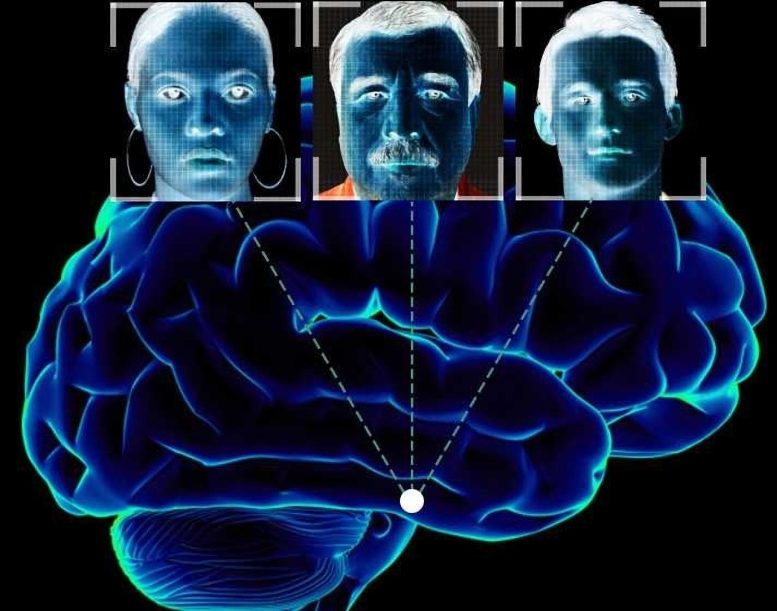
Neuroscientists know a lot about the functionality of our brain cells and recently they furthered that knowledge with a new discovery. By tracing the interaction between the fusiform gyrus, the brain region responsible for face recognition, and using diffusion-weighted imaging, researchers may be able to better understand face-recognition impairments.
For more than a decade, neuroscientists have known that many of the cells in a brain region called the fusiform gyrus specialize in recognizing faces. However, those cells don’t act alone: They need to communicate with several other parts of the brain. By tracing those connections, MIT neuroscientists have now shown that they can accurately predict which parts of the fusiform gyrus are face-selective.
The study, which appeared in the December 25 issue of the journal Nature Neuroscience, is the first to link a brain region’s connectivity with its function. No two people have the exact same fusiform gyrus structure, but using connectivity patterns, the researchers can now accurately predict which parts of an individual’s fusiform gyrus are involved in face recognition.
This work goes a step beyond previous studies that have used magnetic resonance imaging (MRI) to locate the regions that are involved in particular functions. “Rather than just mapping the brain, what we’re doing now is adding on to that a description of function with respect to connectivity,” says David Osher, a lead author of the paper and a graduate student in the lab of John Gabrieli, the Grover Hermann Professor of Health Sciences and Technology and Cognitive Neuroscience and a member of MIT’s McGovern Institute for Brain Research.
Using this approach, scientists may be able to learn more about the face-recognition impairments often seen in autism and prosopagnosia, a disorder often caused by stroke. This method could also be used to determine relationships between structure and function in other parts of the brain.
To map the brain’s connectivity patterns, the researchers used a technique called diffusion-weighted imaging, which is based on MRI. A magnetic field applied to the brain of the person in the scanner causes water in the brain to flow in the same direction. However, wherever there are axons — the long cellular extensions that connect a neuron to other brain regions — water is forced to flow along the axon, rather than crossing it. This is because axons are coated in a fatty material called myelin, which is impervious to water.
By applying the magnetic field in many different directions and observing which way the water flows, the researchers can identify the locations of axons and determine which brain regions they are connecting.
“For every measurable unit of the brain at this level, we have a description of how it connects with every other region, and with what strength it connects with every other region,” says Zeynep Saygin, a lead author of the paper and a graduate student who is advised by Gabrieli and Rebecca Saxe, senior author of the paper and associate professor of brain and cognitive sciences.
Gabrieli is also an author of the paper, along with Kami Koldewyn, a postdoc in MIT professor Nancy Kanwisher’s lab, and Gretchen Reynolds, a former technical assistant in Gabrieli’s lab.
Making connections
The researchers found that certain patches of the fusiform gyrus were strongly connected to brain regions also known to be involved in face recognition, including the superior and inferior temporal cortices. Those fusiform gyrus patches were also most active when the subjects were performing face-recognition tasks.
Based on the results in one group of subjects, the researchers created a model that predicts function in the fusiform gyrus based solely on the observed connectivity patterns. In a second group of subjects, they found that the model successfully predicted which patches of the fusiform gyrus would respond to faces.
“This is the first time we’ve had direct evidence of this relationship between function and connectivity, even though you certainly would have assumed that was going to be true,” says Saxe, who is also an associate member of the McGovern Institute. “One thing this paper does is demonstrate that the tools we have are sufficient to see something that we strongly believed had to be there, but that we didn’t know we’d be able to see.”
The other regions connected to the fusiform gyrus are believed to be involved in higher-level visual processing. One surprise was that some parts of the fusiform gyrus connect to a part of the brain called the cerebellar cortex, which is not thought to be part of the traditional vision-processing pathway. That area has not been studied very thoroughly, but a few studies have suggested that it might have a role in face recognition, Osher says.
Now that the researchers have an accurate model to predict function of fusiform gyrus cells based solely on their connectivity, they could use the model to study the brains of patients, such as severely autistic children, who can’t lie down in an MRI scanner long enough to participate in a series of face-recognition tasks. That is one of the most important aspects of the study, says Michael Beauchamp, an associate professor of neurobiology at the University of Texas Medical School.
“Functional MRI is the best tool we have for looking at human brain function, but it’s not suitable for all patient groups, especially children or older people with cognitive disabilities,” says Beauchamp, who was not involved in this study.
The MIT researchers are now expanding their connectivity studies into other brain regions and other visual functions, such as recognizing objects and scenes, as well as faces. They hope that such studies will also help to reveal some of the mechanisms of how information is processed at each point as it flows through the brain.
Reference: “Anatomical connectivity patterns predict face selectivity in the fusiform gyrus” by Zeynep M Saygin, David E Osher, Kami Koldewyn, Gretchen Reynolds, John D E Gabrieli and Rebecca R Saxe, 25 December 2011, Nature Neuroscience.
DOI: 10.1038/nn.3001